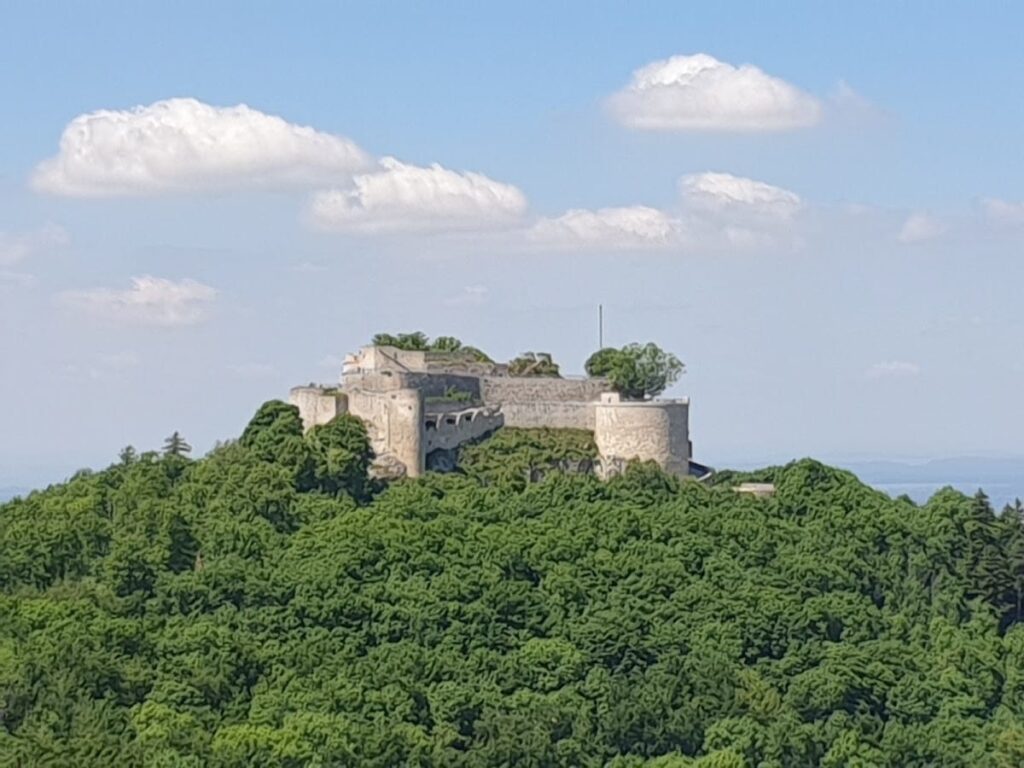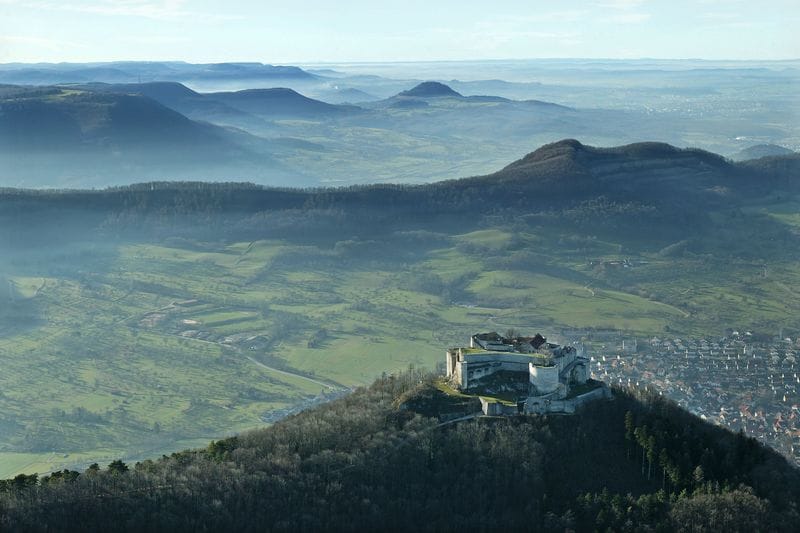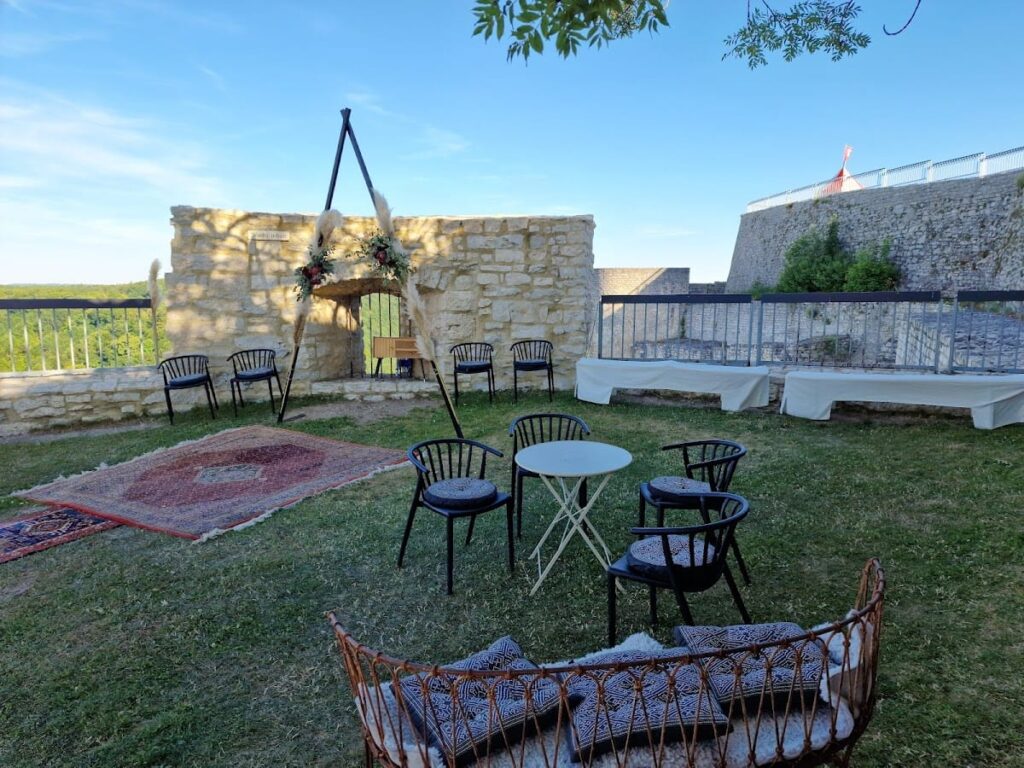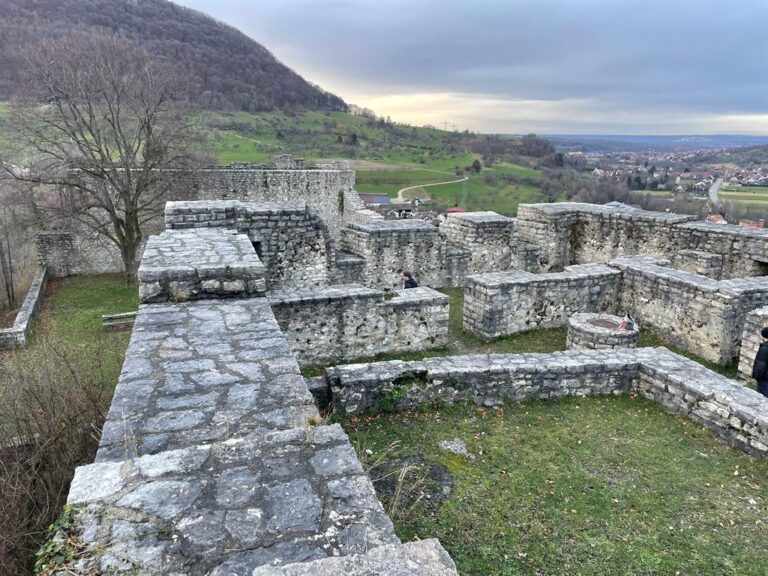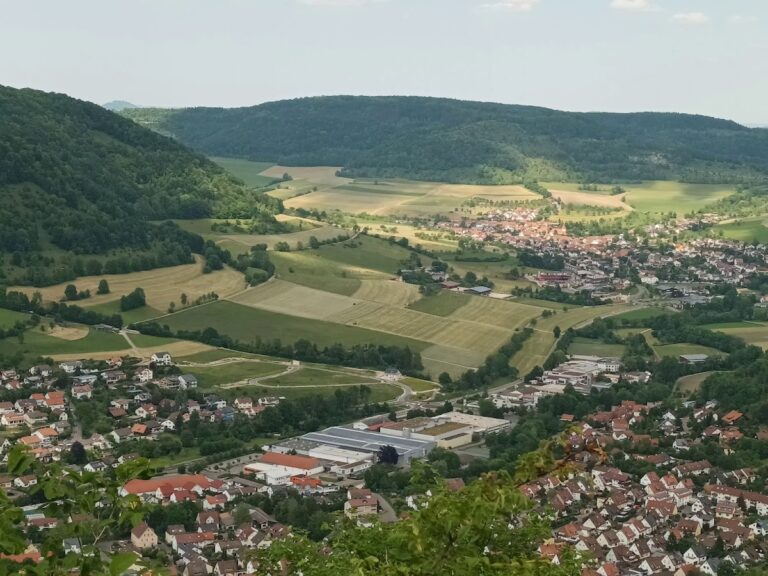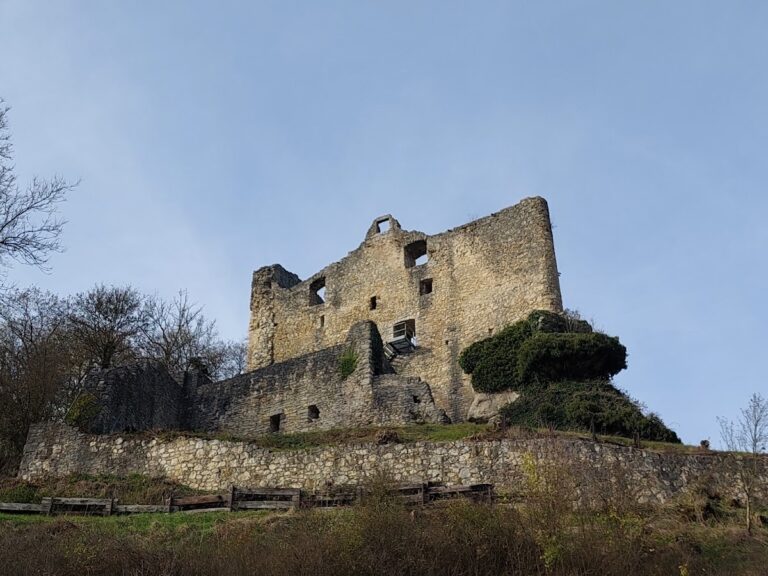Hohenneuffen Castle: A Historic Fortress in the Swabian Alb, Germany
Visitor Information
Google Rating: 4.7
Popularity: Medium
Google Maps: View on Google Maps
Official Website: www.hohenneuffen.de
Country: Germany
Civilization: Medieval European
Remains: Military
History
Hohenneuffen Castle stands on a hill in the Swabian Alb region of Germany, where a fortified settlement existed during the late Iron Age La Tène period (450–1 BCE). This early Celtic outpost was connected to the large Heidengraben oppidum, indicating the site’s strategic importance long before the medieval castle was built.
Between 1100 and 1120, Mangold von Sulmetingen constructed the castle, later adopting the name von Neuffen. The Neuffen family, including the Minnesänger (medieval lyric poet) Gottfried von Neifen, first appeared in records in 1198 as owners. In the late 13th century, the Lords of Weinsberg took possession before selling it to the Counts of Württemberg in 1301.
The castle proved militarily resilient, resisting capture during the Reichskrieg (imperial war) of 1312. It was regarded as nearly impregnable in regional conflicts. In the 15th century, fortifications were expanded, and in the mid-16th century, Duke Ulrich of Württemberg significantly enhanced defenses by adding barbicans (outer defensive walls), round towers, bastions, casemates (vaulted gun emplacements), stables, an arsenal, and two cisterns for water storage.
In 1519, Hohenneuffen surrendered to the Swabian League, a regional alliance, but successfully withstood a siege during the Peasants’ War in 1524. The castle endured a lengthy 15-month siege in the Thirty Years’ War, finally surrendering in November 1635 under negotiated terms that were later broken.
During the 18th century, Duke Karl Alexander planned to modernize the fortress following French military fortification principles. However, his successor Karl Eugen abandoned the project due to high costs and doubts about its strategic value. Starting in 1793, the castle was decommissioned and partially dismantled. Demolition began in 1803, and local residents repurposed the building materials.
From 1830, preservation efforts began, and by the 1860s, the ruins were opened to the public. Throughout its history, Hohenneuffen served as a state prison for notable figures such as Count Friedrich von Helfenstein (died 1502), Abbot Georg Fischer (1512), Konrad Breuning (tortured and executed in 1517), Matthäus Enzlin (17th century), and Joseph Süß Oppenheimer, who was imprisoned there in 1737 before his execution in 1738.
In World War II, the castle was used as an anti-aircraft observation post. In 1948, it hosted the Three-States-Conference, where representatives of Württemberg-Baden, Württemberg-Hohenzollern, and Baden met. This meeting initiated the process that led to the creation of the state of Baden-Württemberg in 1952.
Remains
Hohenneuffen Castle is situated on a limestone hill about 743 to 745 meters above sea level, providing a commanding view of the surrounding landscape. The medieval fortress features a complex layout with multiple defensive structures built primarily during the 16th century.
The castle’s fortifications include barbicans, which are outer defensive walls designed to protect the main gate, and round towers that offered vantage points for archers and artillery. Bastions, projecting parts of the walls, allowed defenders to cover adjacent walls with gunfire. Casemates, vaulted chambers built into the walls, served as protected gun emplacements. The site also contained stables for horses, an arsenal for weapons storage, and two cisterns to collect and store water.
These Renaissance-era fortifications remained largely unchanged for about two hundred years. After partial demolition in the early 19th century, preservation efforts from 1830 onward prevented further destruction. By the 1860s, the ruins were made accessible, and one building in the upper bailey was converted into a restaurant in 1862, which still operates alongside a beer garden and kiosk.
Visitors can still access some of the casemates today. The castle grounds host cultural events such as medieval markets and concerts. In 2014, a Staufer stele was installed near the Friedrich bastion to honor the historical connection between the Neuffen family and the Staufer dynasty, a prominent medieval royal house.
The outer walls are illuminated on weekends and holidays, continuing a tradition renewed in 1984 that dates back to an original lighting installation from the 1950s. The site also features a 9.3-kilometer mountain running course, starting in nearby Linsenhofen and finishing at the castle, with an elevation gain of approximately 438 to 483 meters.

